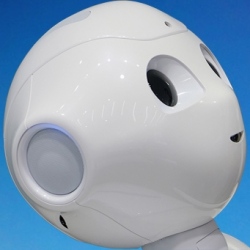
The American people overlooked all of Republican nominee Donald Trump’s faults and elected him to office in the belief that he will fix the nation’s deep-seated problems of inequity and injustice. And they rebelled against the business interests and corruption that they believed Hillary Clinton represented.
Trump’s victory was enabled by technology, everything from his use of social media to Clinton’s email scandals to Russian hacking. But advancements in technology and how they reshape our economy may also keep him from delivering on some of the major promises that made him so popular during the campaign season.
The truth is that, over recent decades, the rich have been getting richer. Power has shifted to Wall Street and business. Globalization has caused the loss of millions of jobs in the United States. Some white Americans have also been terrified at the changing complexion, and values, of the country. Trump very smartly played to these fears and promised his supporters what he knew they wanted: greater economic opportunity by bringing back jobs shipped overseas.
Those jobs, many in the manufacturing sector, are increasingly done by technology. Machines are learning to do the jobs of manufacturing workers; artificial intelligence-based tools are mastering the jobs of call-center and knowledge workers; and cars are beginning to drive themselves.
Over the next decade, technology will decimate more jobs in many professions, inequality will increase and more people will be disadvantaged.
Some robots already cost less to operate than the salaries of the humans they replace, and they are getting cheaper and better. Boston Consulting Group predicts that, by 2025, the operating cost of a robot that does welding will be less than $2 per hour, for example.
That’s more affordable than the $25 per hour that a human welder earns today in the U.S., and even cheaper than the pay of skilled workers in the lowest-income countries. Trump may be able to keep immigrants out, but how will he stop the advance of robots?
Uber and many other companies are working on developing cars and trucks that don’t need a driver in the driver’s seat. According to the American Trucking Associations, approximately 3 million truck drivers were employed in the United States in 2010, and 6.8 million others were employed in other jobs relating to trucking activity, including manufacturing trucks, servicing trucks and other types of jobs.
So roughly one of every 15 workers in the country is employed in the trucking business. According to the U.S. Bureau of Labor Statistics, roughly another 300,000 people work as taxi drivers and chauffeurs. We could be talking about millions of jobs disappearing in the early 2020s.
